Lang & Heyne And Squaring Off With Gorgeous Georg
Dresden, Germany is home to many splendid things: beautiful scenery, the majestic river Elbe, numerous monuments, and parks whose founding dates range from the sixteenth through the twentieth centuries. Once a crossroad in European culture, science, and technology, Dresden today offers incredible architecture, important art collections, and beautiful natural scenery.
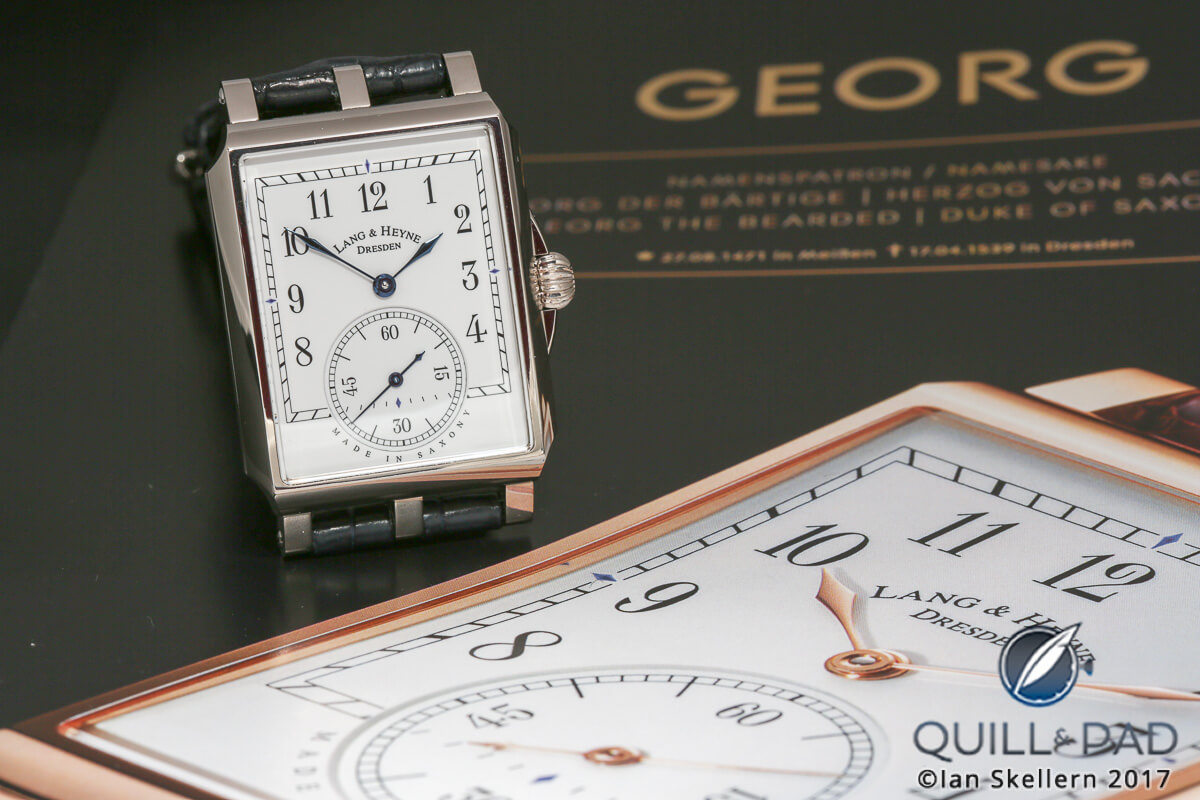
Lang & Heyne Georg in platinum
This is also rings true for the art of watchmaking, which goes back to Elector August I who invited artisans to move to Dresden in the sixteenth century to skillfully create their sophisticated masterpieces.
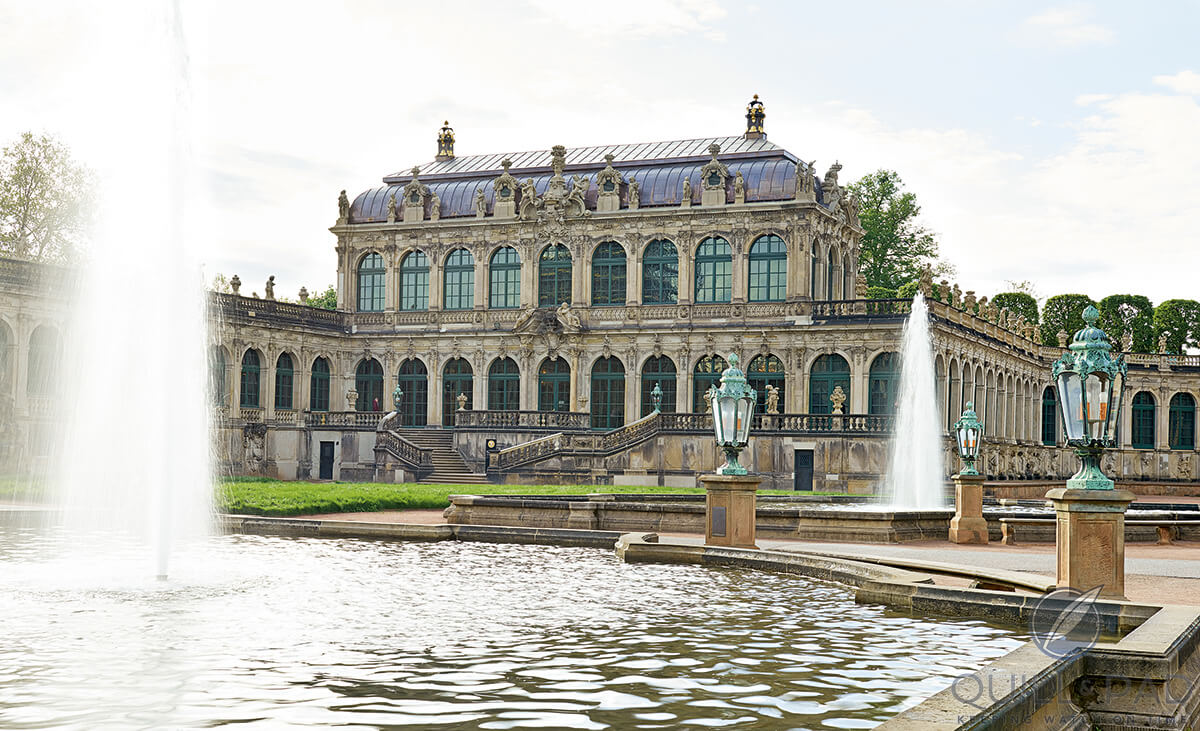
The Royal Cabinet of Mathematical and Physics Instruments museum in Dresden, which is housed in the historic Zwinger along with other state museums
The beautiful baroque Zwinger Palace houses the world-famous Mathematisch-Physikalischer Salon (Royal Cabinet of Mathematical and Physical Instruments), one of the earliest institutes for science and research. Now a museum, it offers a unique collection of historic clocks and scientific instruments as well as astronomical, optical, and geodetic devices. This institution remains as a testament to the progressive spirit of Dresden and its rulers.
The 800-year-old city of Dresden is the perfect backdrop for Marco Lang’s manufactory. Born in 1971 as a fifth-generation watchmaker, young Marco used to look over his father Rolf’s shoulder, who worked as head restorer in the aforementioned Royal Cabinet of Mathematical and Physical Instruments. With a passion for the art form and ingenious mechanics in his genes, Lang followed in his father’s footsteps, first learning the basics of metalworking, a skill that would be of great importance for his later work.
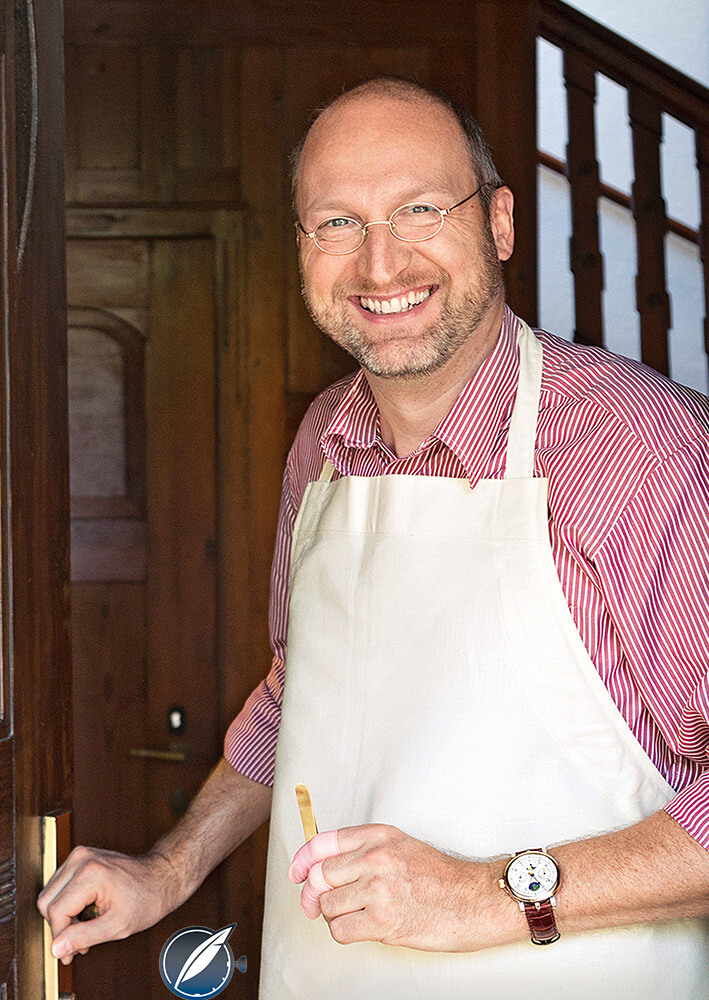
Lang & Heyne co-founder Marco Lang
In Glashütte, the nearby Mecca of fine timepieces (see Made In Germany: The Glory Of Glashütte), Lang was an apprentice in precision mechanics for three years, which he followed by earning a master certificate in watchmaking. After German reunification Lang met the no less talented Mirko Heyne. Two kindred spirits in horology, they founded Lang & Heyne in the splendid baroque city.
Lang & Heyne’s first watches
Just one year later, Lang & Heyne presented its first watches Friedrich August and Johann with the A.H.C.I. (Academy of Independent Watchmakers) at Baselworld.
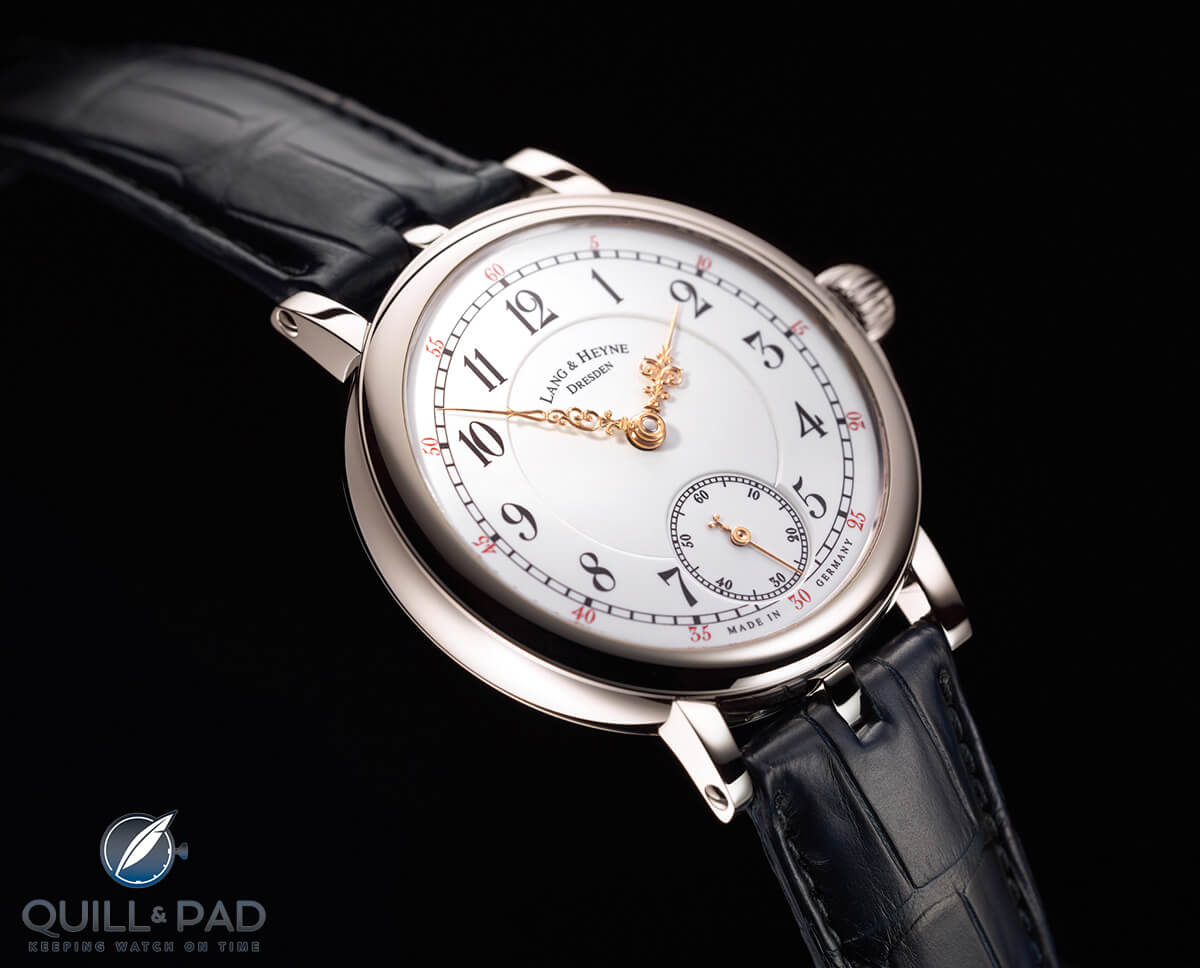
Lang & Heyne Friedrich August in white gold
Expressing an affinity to Dresden, these models were named after important noble personalities who once made outstanding contributions to Saxony.
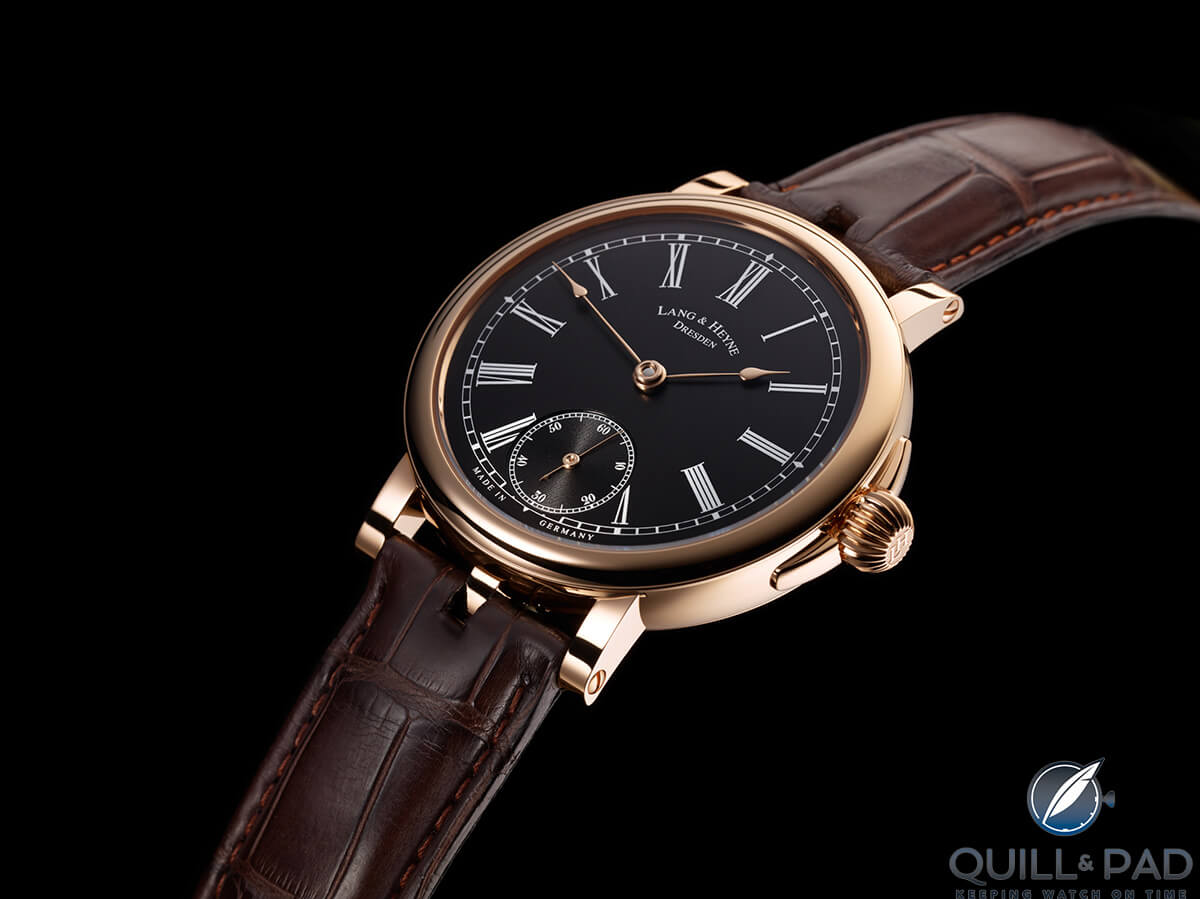
Lang & Heyne Johann in red gold
Like many of those that followed, these first timepieces featured manual winding movements and beautiful enamel dials that invited observers on a trip back in time thanks to their resemblance to pocket watches from around 1900.
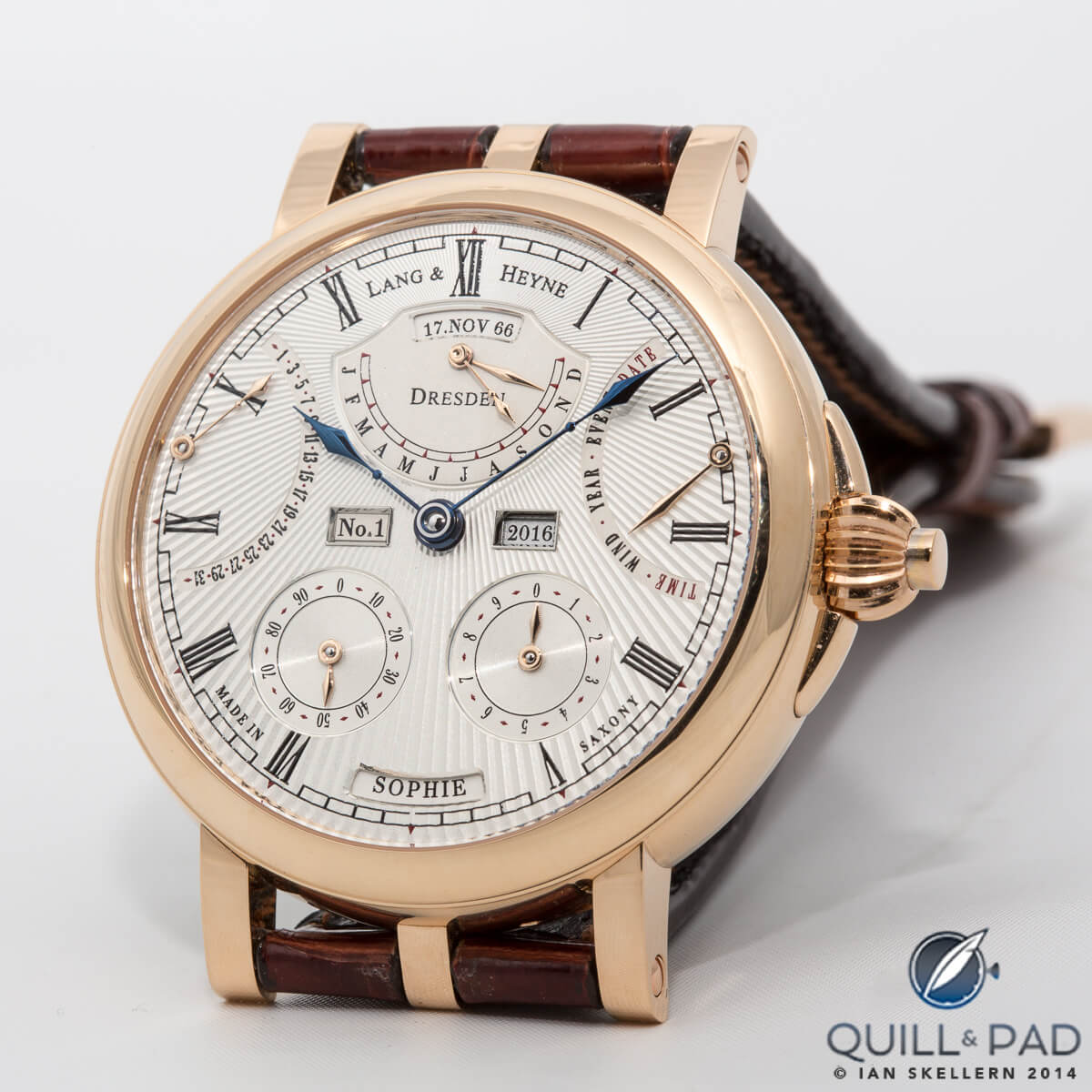
Despite a plethora of indications, all displays of the Lang & Heyne Augustus are easily and logically read
A perfect harmony of craftsmanship, tradition, and precision, these looks and details were born of Lang and Heyne’s obsessive attention to detail; these watches laid the foundation for a collection that is highly sought-after among lovers of independent watchmaking, particularly those who superlative hand finishing.
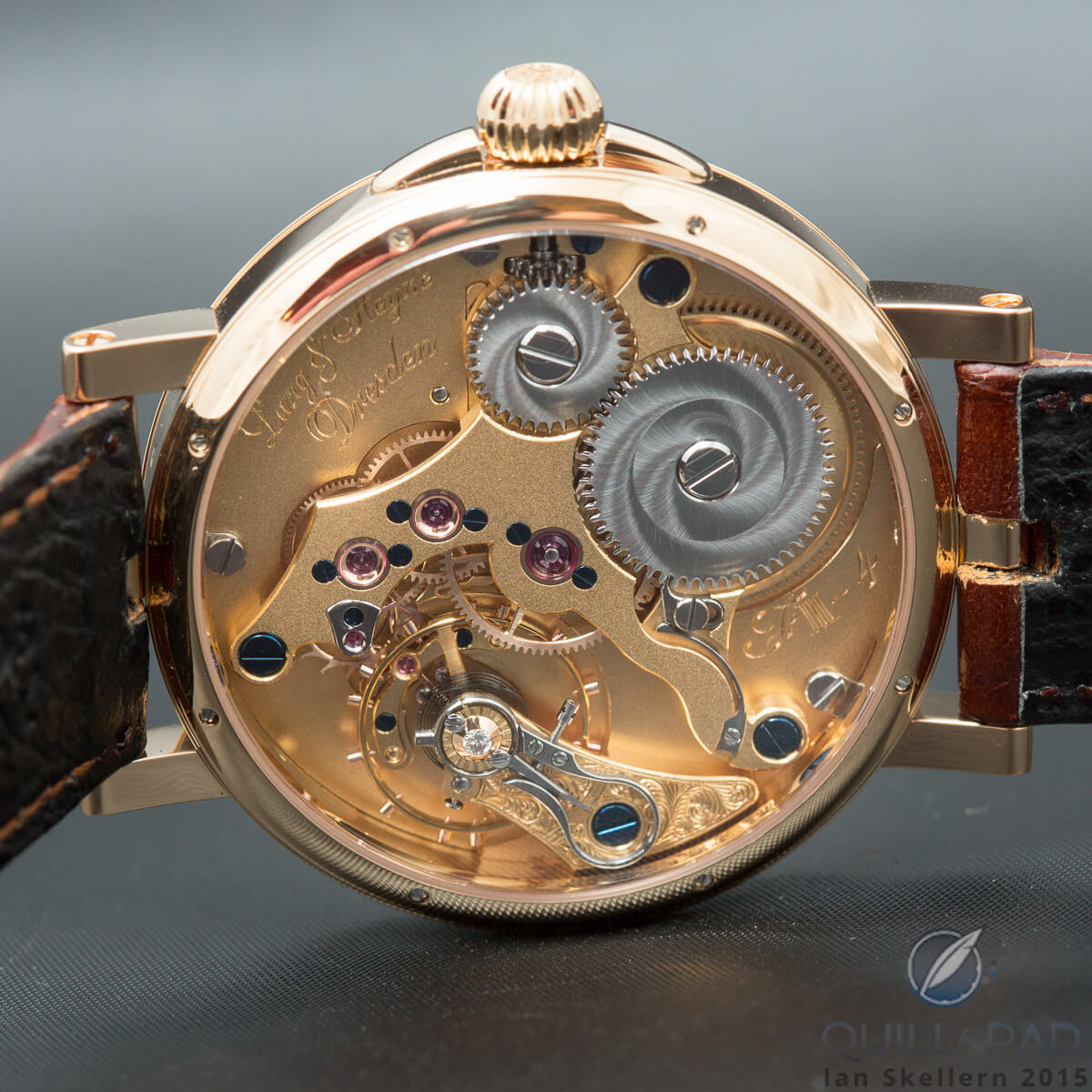
The beautiful movement of Lang & Heyne’s Friedrich III
Let’s take a closer look at some of the unique horological features and interesting finishing methods that are revealed when the owner or observer turns the watches over.
- The plates, bridges, and balance cocks are treated with a traditional method called silver graining. Lang revived this traditional finish, once a typical element of Saxon watchmaking, where a grain-like surface is created using a fine brush and a mixture of silver powder and salt. It is then plated in gold.
- Connoisseurs may spot the famous Breguet balance spring within Lang & Heyne’s movements, the caliber’s heart, which sets the pace for outstanding precision.
- Lang & Heyne’s pallet lever, made of solid gold, has been the brand’s signature element since 2006.
- Fine countersunk gold chatons for each bearing jewel further enhance the exceptional aesthetic appearance of Lang & Heyne’s movements.
- The manually polished and partly flame-blued screws add even more eye-catching hues to the Lang & Heyne movement’s color composition.
- Instead of the normal synthetic ruby jewel, a natural diamond serves as the endstone of the balance staff supporting the balance wheel.
Although Heyne left the company in 2002, setting out in a different direction as head of movement construction at Nomos Glashütte, Lang successfully continued to build his vision of a genuine manufactory in the original sense of the word, where timepieces are handmade in limited series.
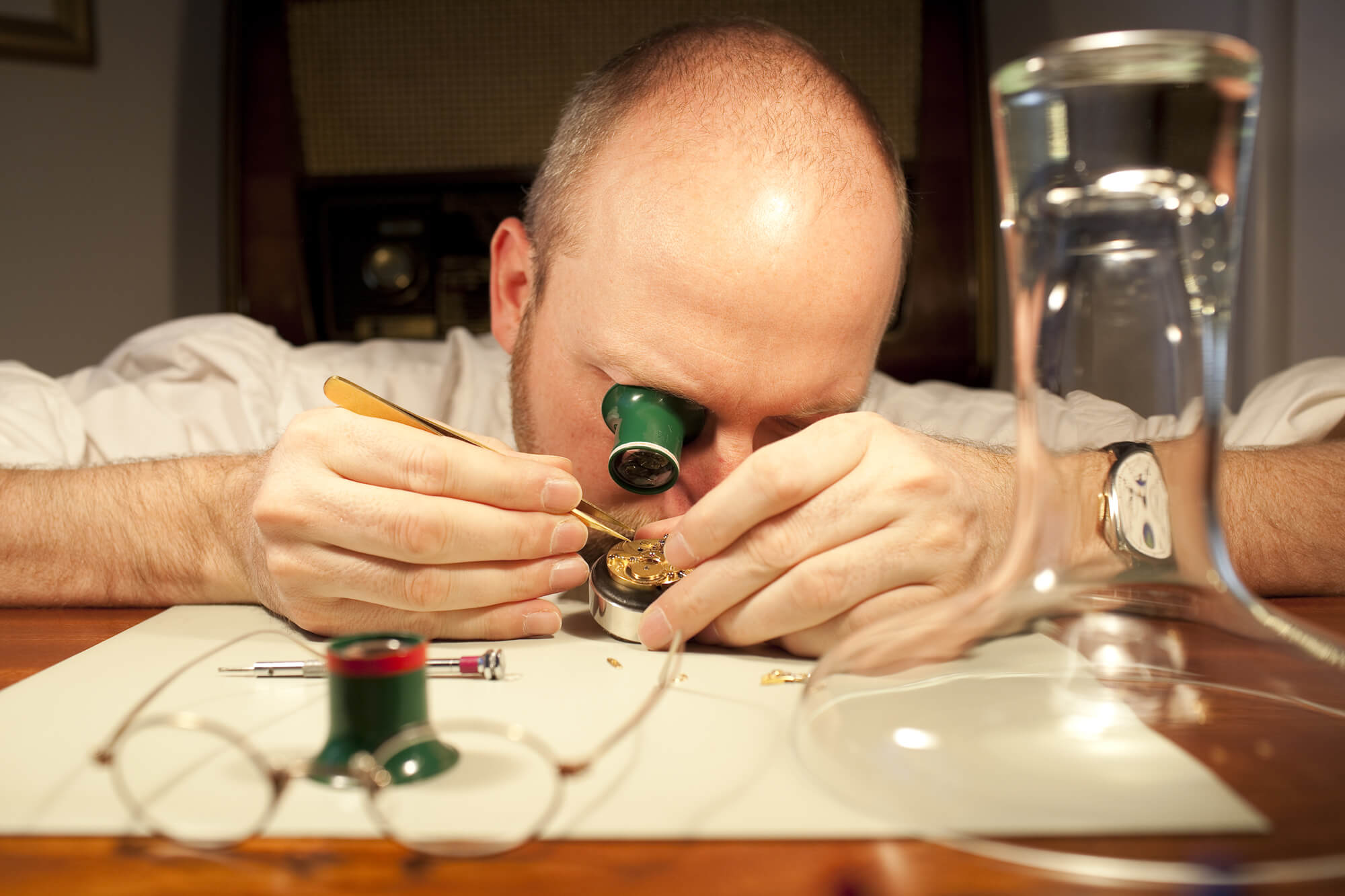
Marco Lang at the bench
Today, the Lang & Heyne collection comprises mostly three-handed timepieces, some with date indications and some with extraordinary champlevé enamel dials. But there are also some truly special mechanical marvels among these timepieces like the Albert, a monopusher chronograph, and the Moritz with an innovative complete calendar that includes a display of earth’s declination.
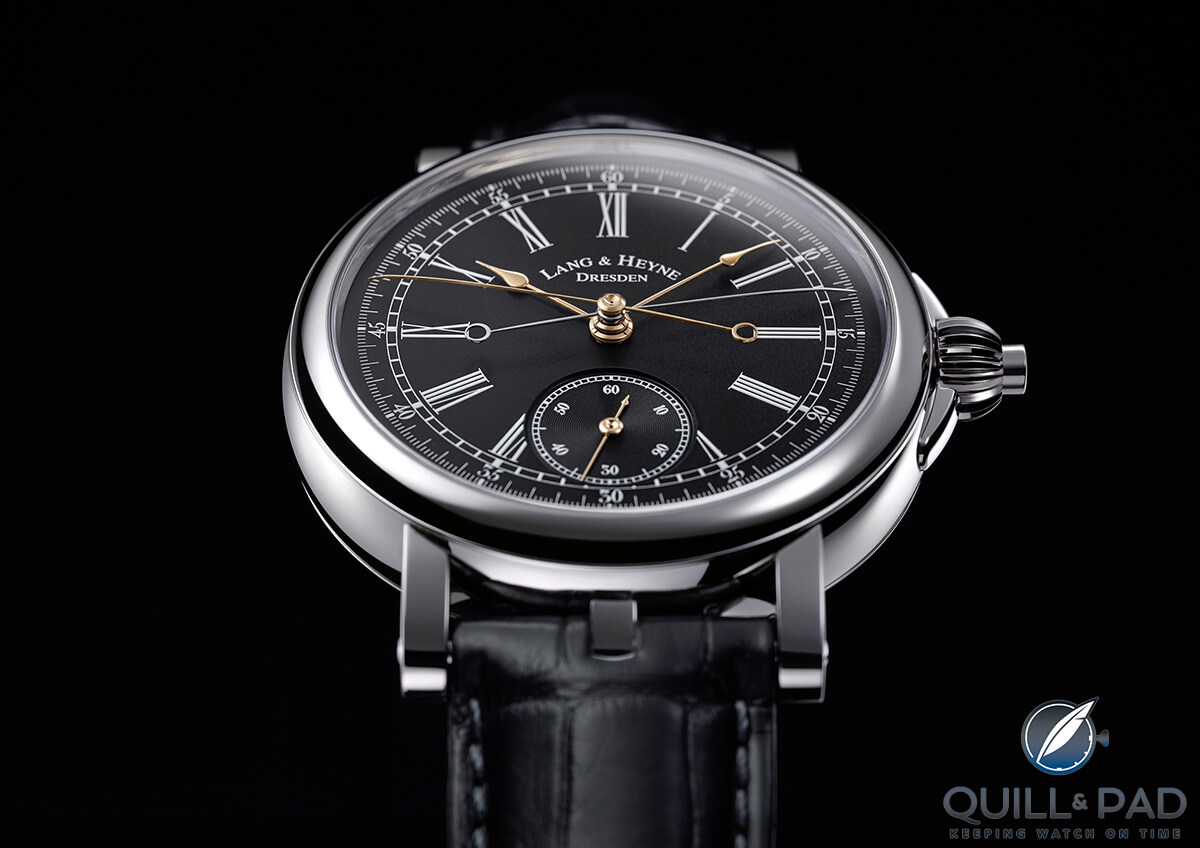
Lang & Heyne Albert in platinum
The Albert is my favorite timepiece from the Saxon manufacture.
Next to their highly refined character, all watches from Lang & Heyne have had one thing in common: round cases.
Until now.
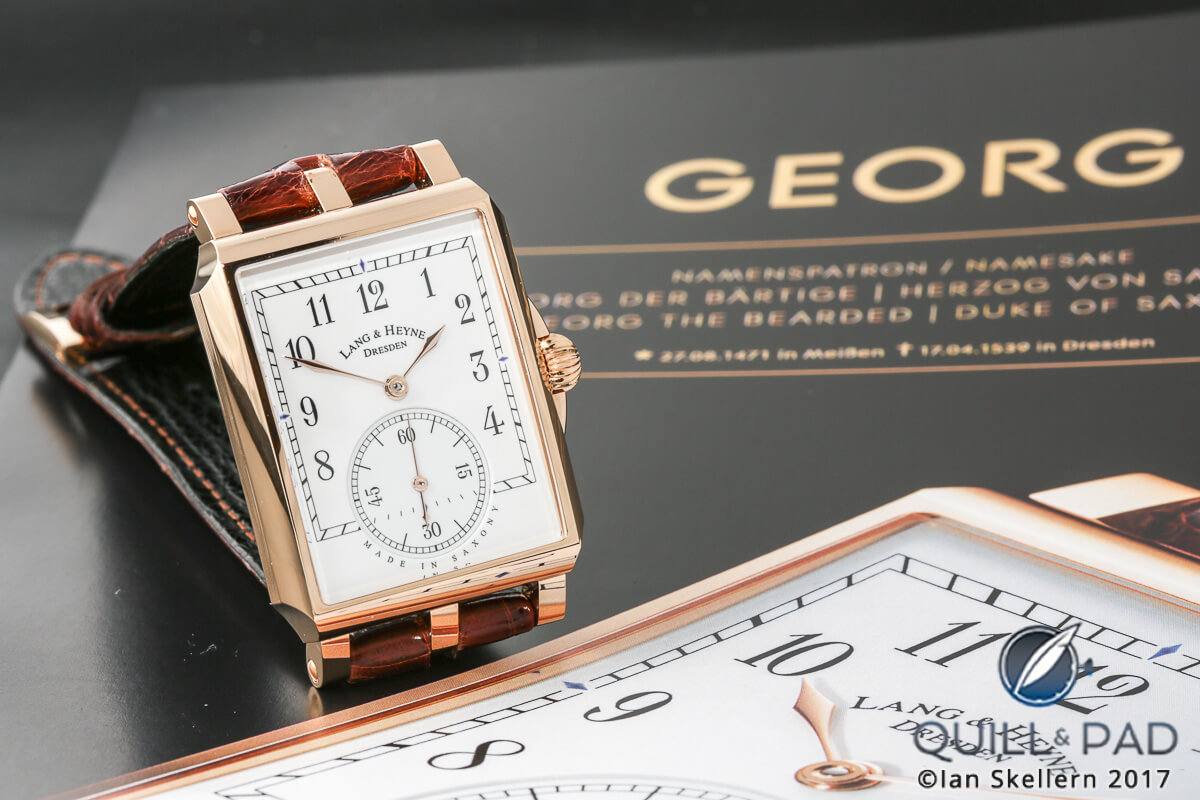
Lang & Heyne Georg in red gold
Lang & Heyne Georg: in a class of its own
That is why this year’s debutant, Georg, the first rectangular watch from Lang & Heyne, was a real surprise – and it was extremely well-received among the fans of the brand (see Quill & Pad Team Members Pick Their Top 5 Watches From Baselworld and Baselworld 2017 Round Table: What We Liked And What We Didn’t Like), as shaped cases exude a particular elegance and class.
The name of the model refers to Georg “the Bearded,” Duke of Saxony in the sixteenth century.
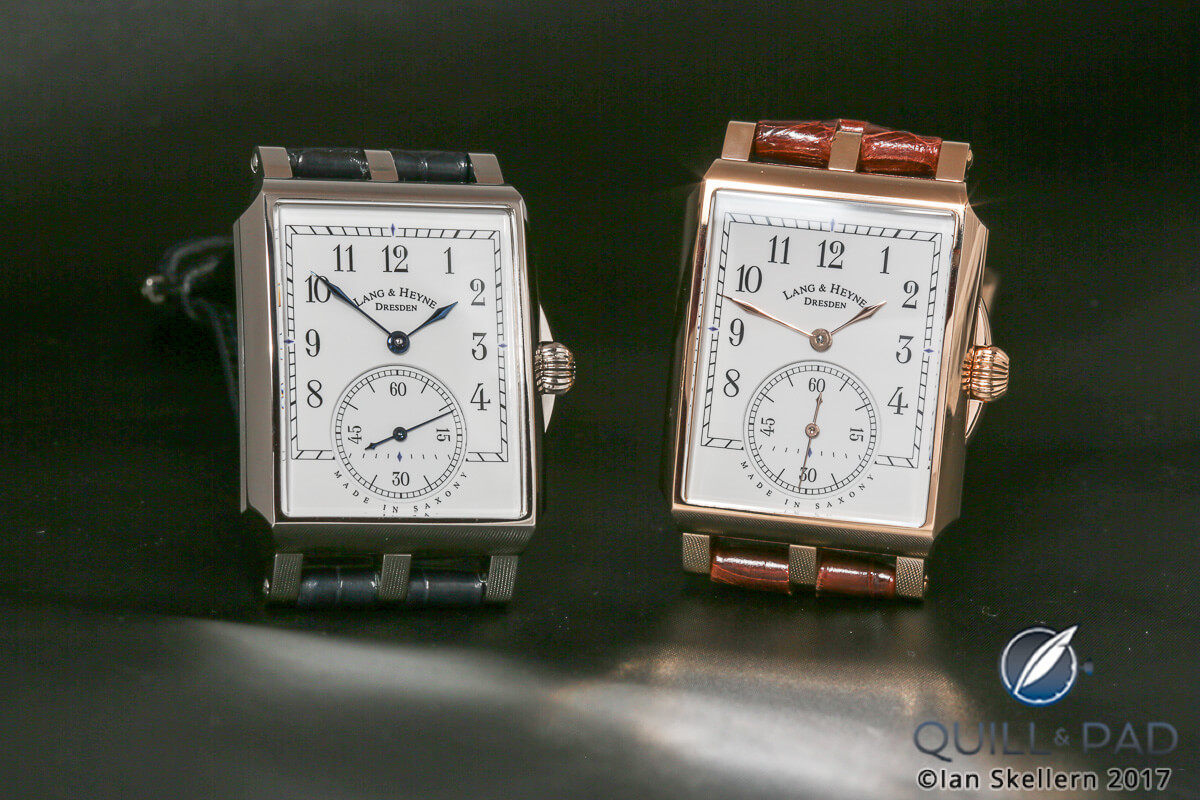
Lang & Heyne Georgs in platinum and red gold
As is always the case with Lang & Heyne, the caliber once again takes center stage. But let’s first take a closer look at the rectangular case, which really deserves our special interest. Crafted in platinum, white gold, or pink gold, it is slightly curved for a perfect fit to the wrist and features horizontal line texturing and the manufactory’s distinctive triple lugs.
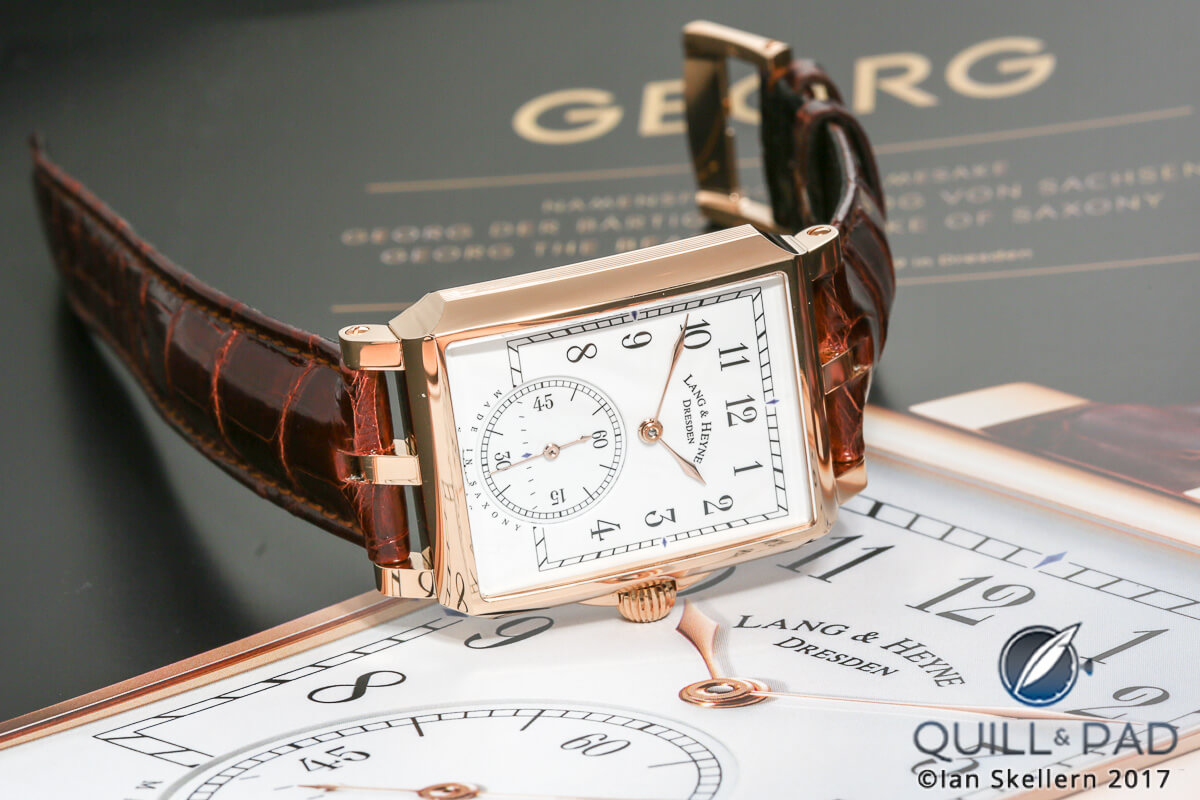
Lang & Heyne Georg in red gold
This case frames an impeccable white enamel dial that is in typical manner very understated. Its Art Deco-inspired style with oversized, off-center seconds at 6 o’clock measuring fully 14.5 mm in diameter is a perfect example of a timeless design that transcends fashion or trend. The dial will look as fresh in 100 years from now as it does today.
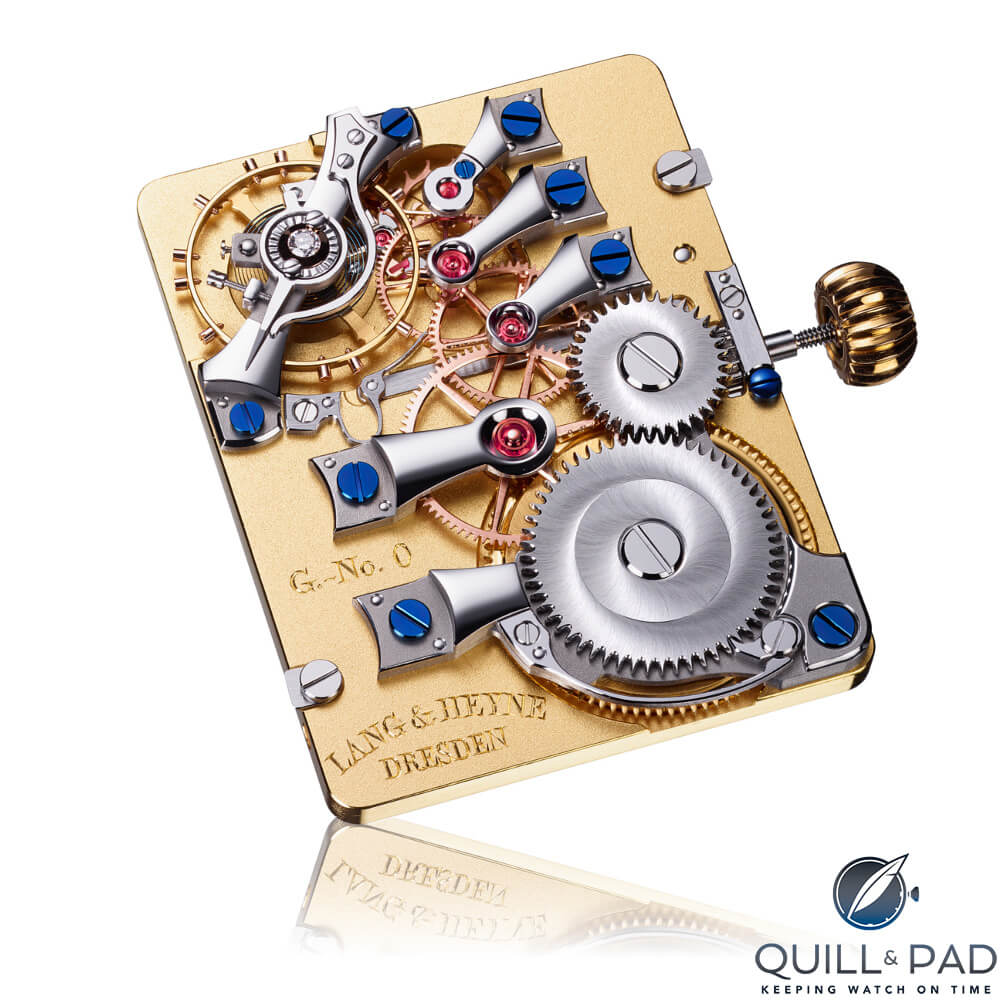
Lang & Heyne’s rectangular Caliber VIII
Let’s dive into Caliber VIII, which is a true visual feast and – no exaggeration – a true piece of art.
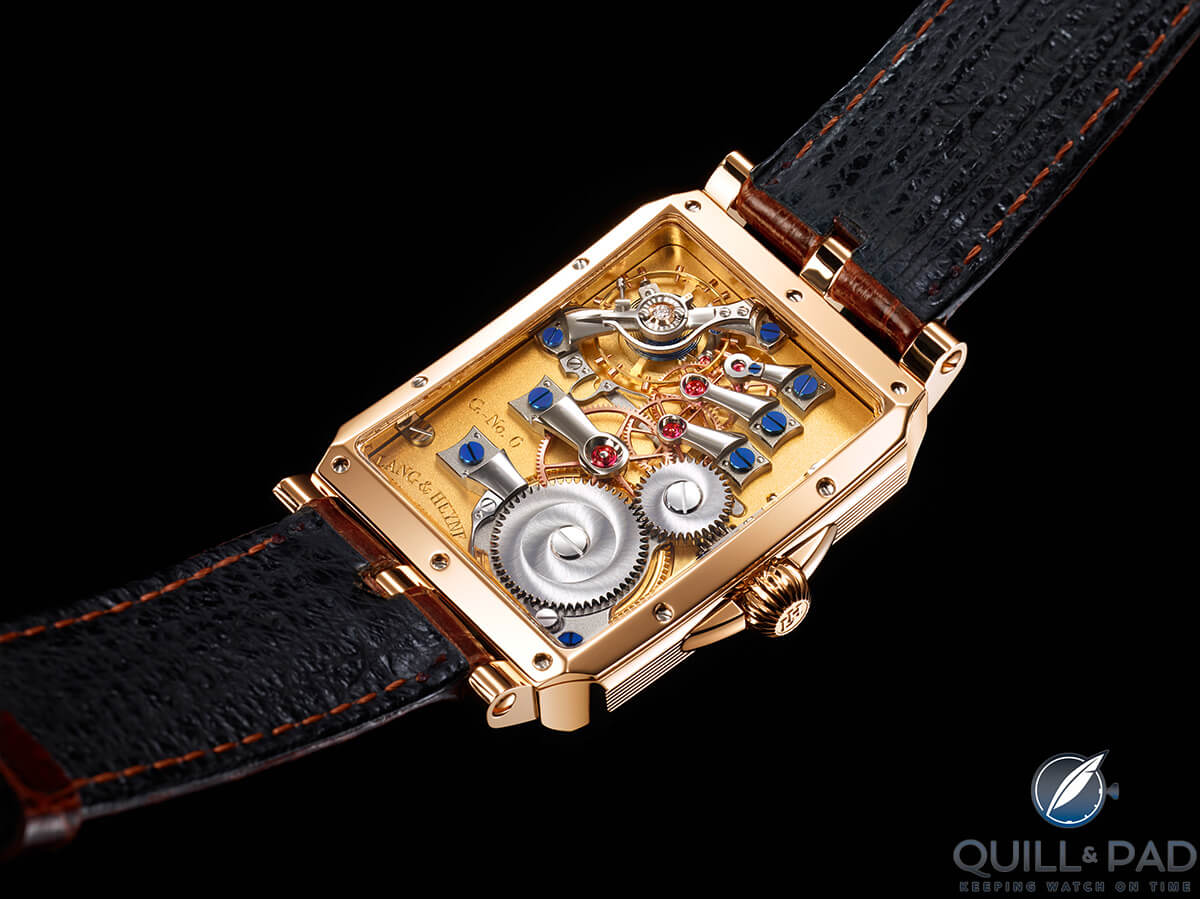
A beautiful view of Caliber VIII through the display back of the Lang & Heyne Georg
Also rectangular-shaped, the manually wound movement offers a 55-hour power reserve and beats at a traditionally sedate 2.5 Hz. Its aesthetic qualities include finely finished golden wheels, levers, and springs, with eye-catching contrasts between finished surfaces such as the snail finishing on the gears. This is craftsmanship of the highest level.
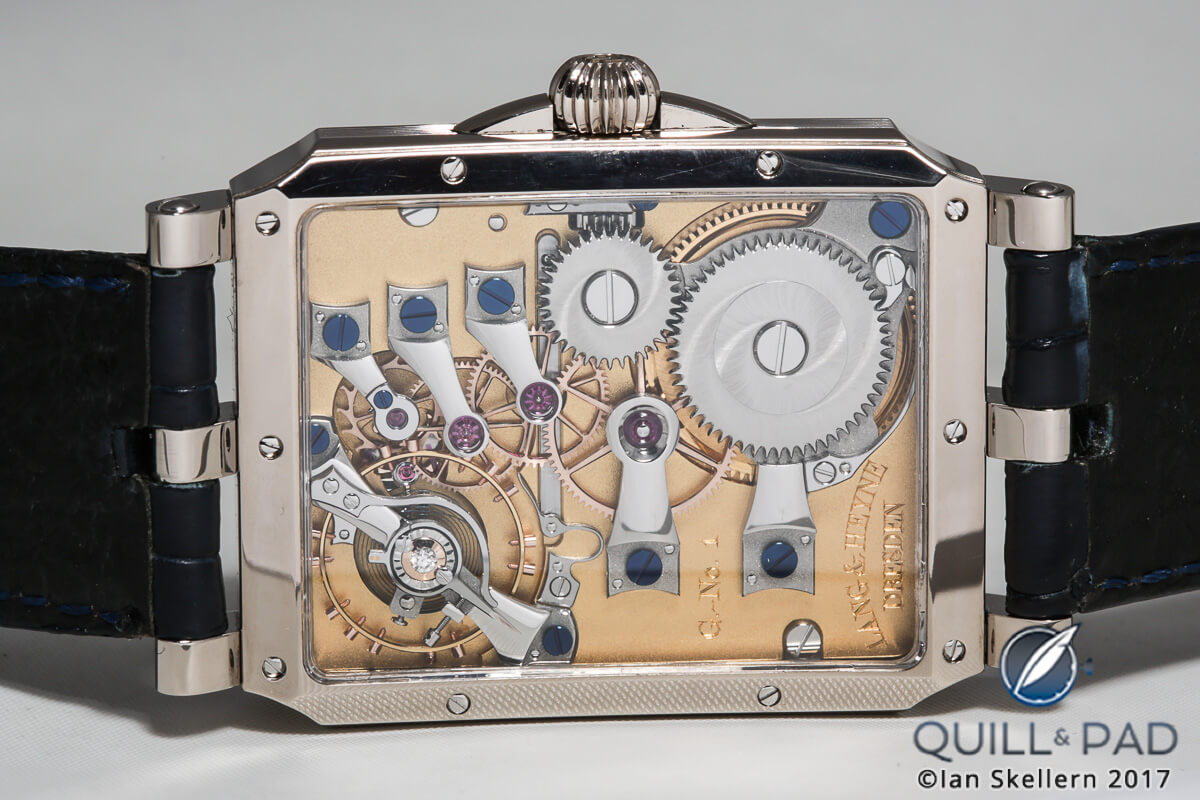
View through the display back of the Lang & Heyne Georg in platinum
Instead of conventional bridges, cocks (single-arm bridges) hold the gear train in place. The result is an example of breathtaking architecture placing every single component in the spotlight, all against the beautiful backdrop of a frosted main plate.
This is poetry in motion.
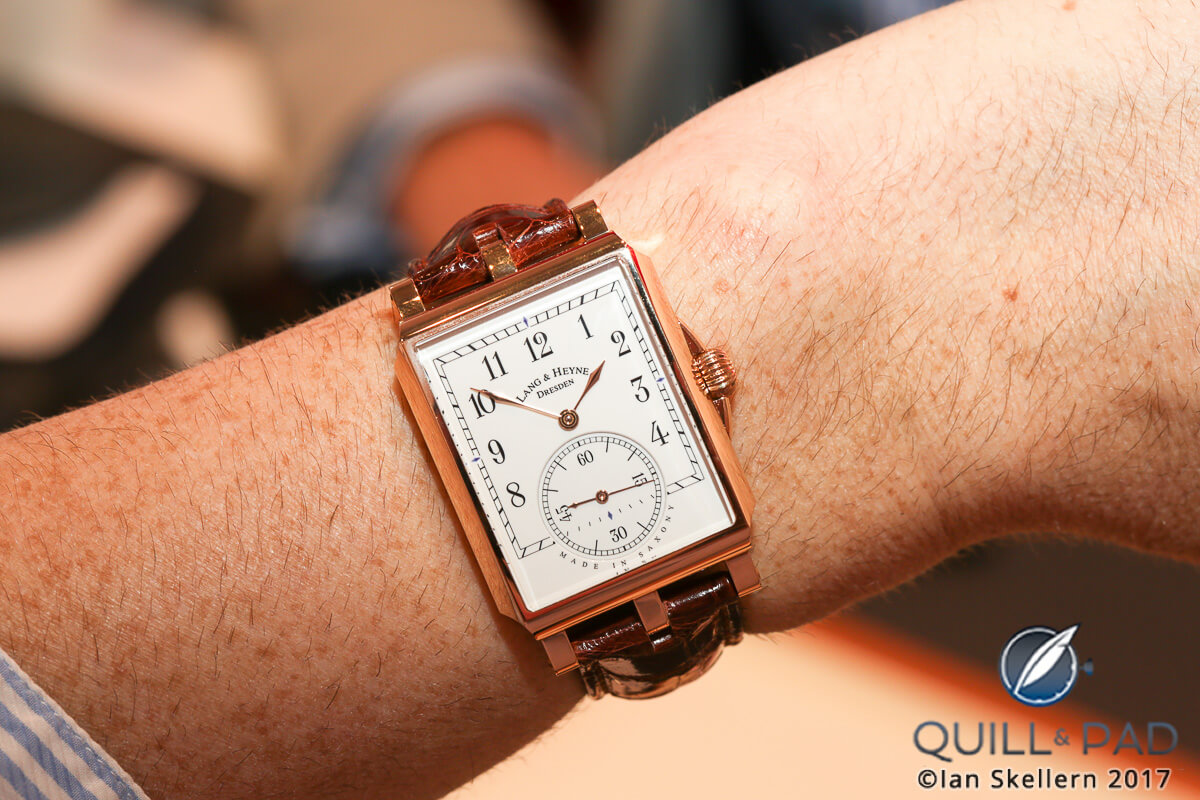
Lang & Heyne Georg in red gold on the wrist of Marco Lang
For more information, please visit www.lang-und-heyne.de/en/models/georg.
Quick Facts Lang & Heyne Georg
Case: 40 x 32 x 9.4 mm, platinum, white gold, pink gold
Movement: manual winding Caliber VIII, 2.5 Hz/18,000 vph frequency, 55-hour power reserve
Functions: hours, minutes, seconds
Price: €26,410 (pink gold), €27,830 (white gold), €35,280 (platinum), excluding tax
You might also enjoy:
Augustus by Lang & Heyne: No More Forgotten Anniversary Excuses
Lang & Heyne’s Marco Lang Heads New Watch Group
Trackbacks & Pingbacks
-
[…] Anton, baptized for the ruler of Saxony of the same name who died in 1836, is the second rectangular watch to come from Lange & Heyne’s Dresden workshop after 2017’s surprising and beautiful Georg. […]
Leave a Reply
Want to join the discussion?Feel free to contribute!



Amazing watches. My favorite is the Albert because its a hand would central seconds chronograph. Not many of those around. The Georg is as desirable because of that beautiful movement. If I could I would buy them both – not that I could afford even one. 🙂
Lang & Heyne makes such incredible timepieces, I’m not sure why they don’t get anywhere near the attention as other independent brands like Laurent Ferrier or Kari Voutillainen.
Side note, you seem to have confused the Albert with the Moritz. The Albert is a monopusher chronograph, but has no calendar nor declination complications. That’s the Moritz, which is not a chronograph.
Thank you, Jon, and caption corrected.
Hi Ian, unfortunately it’s still incorrect. The black dialed platinum chrono is the Albert, not the Moritz. The sentence above the picture is describing a watch that doesn’t exist, which would be a combination of the Albert (mono pusher chrono) with a Moritz (compete calendar with declination)
It’s hopefully correct now, Jon. I added a couple of missing words.
Nice article Sabine on my good friend and brilliant watchmaker Marco.
One small correction the image described as movement of The Johann with champleve dial is another model, the Friedrich III, which features the Caliber VI and not Cal I, which is the traditional 3/4 plate caiber, rather than the trigonal bridge, as seen in this image.
The Georg is superb and one of my favorite watches this year in Baselworld.
Cheers,
Tim
Thank you, Tim, caption corrected.
Don’t call Glashütte a Mecca. More appropriate would be Jerusalem, if anything.
A nice reminder of why we love mechanical watches in the first place. A classic legible dial with a beautifully finished movement reduced to its elemental parts, entirely visible for you to admire at your leisure. Also, a nice touch with the “Made in Saxony” designation instead of the broader Germany label.